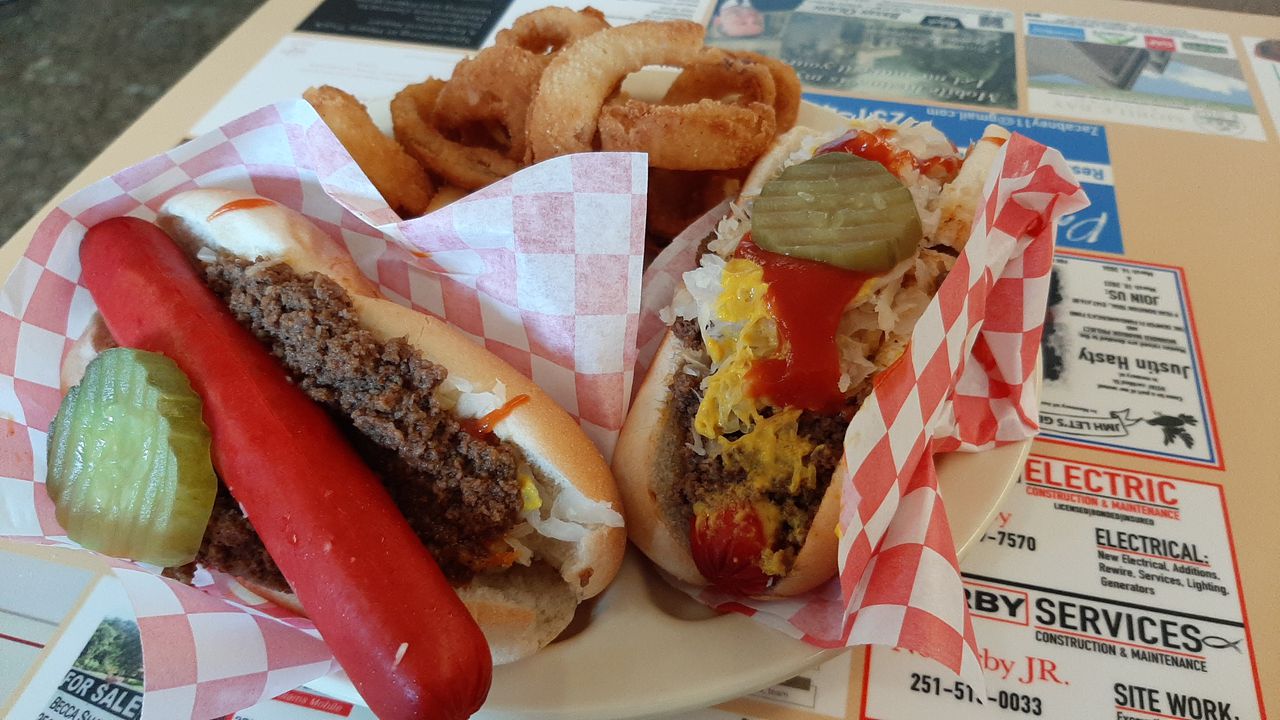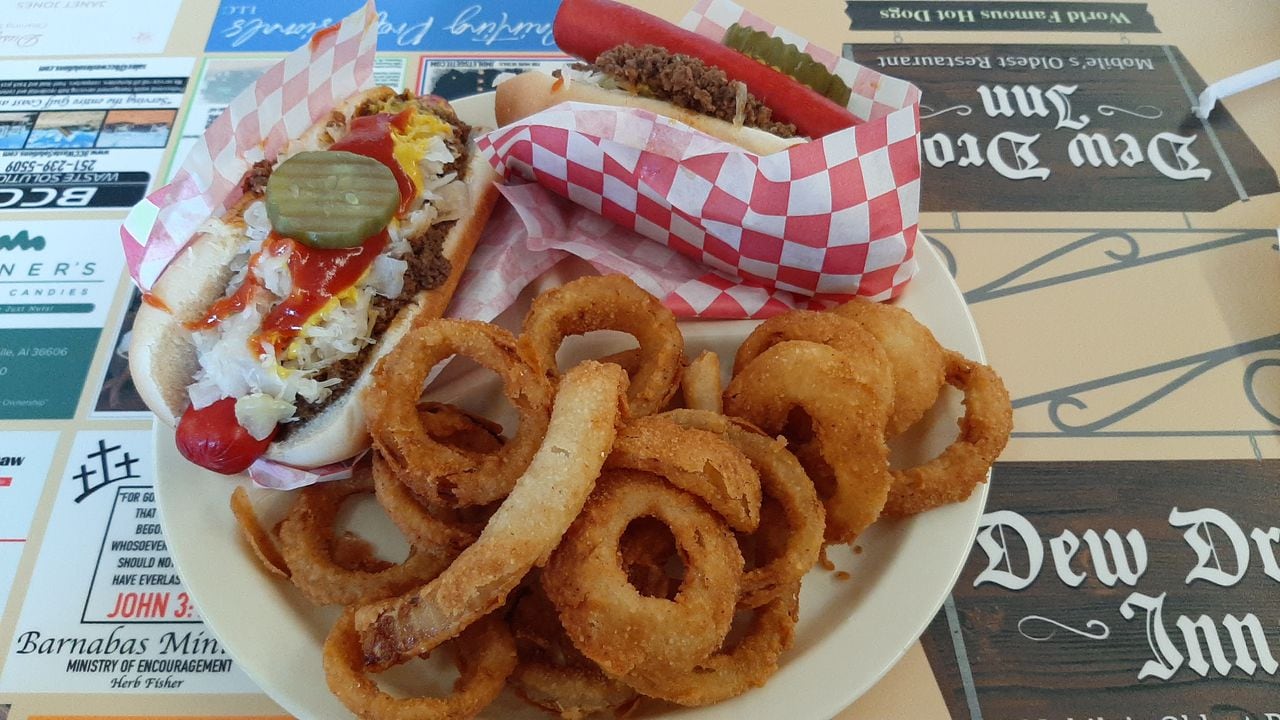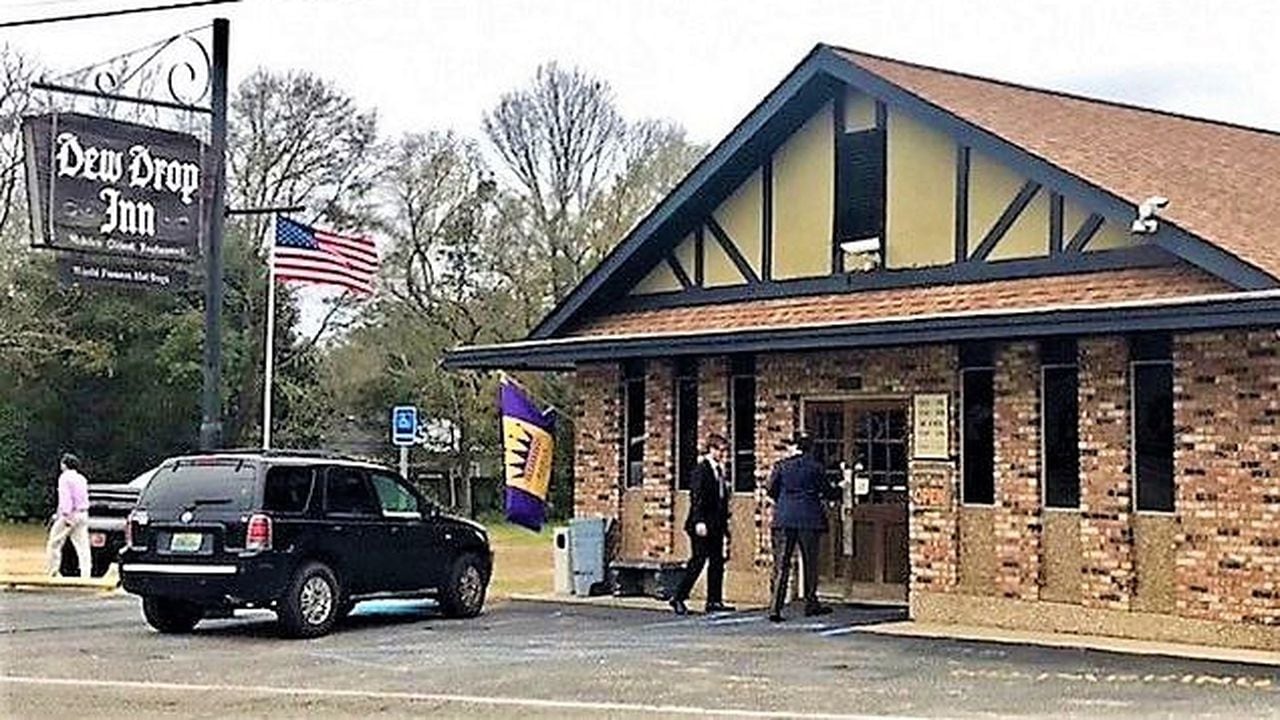You can have a Dew Drop dog upside down, but donât mess with tradition
It turns out that the humble Dew Drop Inn Hot Dog isn’t just a consensus hall of famer on the short list of truly iconic Mobile food items. It’s also an entrée that illustrates the powerful duality of tradition: You’d better not mess with it a little bit, but it might be okay to turn it completely on its head.
Powell Hamlin has seen the difficulty of change, which borders on impossibility in this case. He saw it way back when his father owned the place and a manager got a slick idea for improving the profit margin.
“I was just a kid, I didn’t know any better,” says Hamlin. “But apparently I did. He said he was gonna save money by not putting a pickle on the hot dog. And so there you go. He made a change and it was pretty much the worst thing he ever could have done.”
Cue legions of dissatisfied diners, until the pickle slices made a speedy return. “Just a simple thing as a pickle,” muses Hamlin, years later. “Mobile’s oldest restaurant” already had a lot of history when Hamlin’s dad took it over at the end of the 1960s, and you feel it when you walk in. There’s the old paneling, the tables dedicated to Murphy High School classes of the 1950s. And there’s the prices: a basic burger for $4.50, a loaded hot dog for $4.25. And many Mobilians can tell you from memory exactly how an all-the-way Dew Drop Dog is built, with chili, sauerkraut, mustard and ketchup blanketing a distinctively red wiener. As in, so red that the eyewitness accounts of buns stained pink by it are not urban legends. And, you’d better believe, a pickle slice atop it all.
It turns out, though, that just keeping everything the same is no easy task. Hamlin says that before he took over in 1991, he traveled the nation searching for a wiener that would meet his demands: It had to be made with pork and beef, no filler, and it didn’t have to be big but it did have to be red.
“Before I started working, I went to different places and looking at all the different hot dogs and every part of the country is different,” he says. “I mean, they’re all different. You go to South Carolina, they even have a red dog up there. But it’s terrible.”
The Dew Drop Inn in Mobile, Ala.(Bob Carlton/[email protected])
He found a place in Minnesota that impressed him. They weren’t using scraps to make their hot dogs. They had a good product. “So it was a great hot dog,” he says. “And I said, ‘Well, the only thing we need is, you have to dye it red.’ And they thought I was crazy. ‘Why would you do that?’ ‘Well, because this, that hot dog has been red for almost 100 years, and we’re not gonna stop it. We need a red hot dog.’”
All was well until the COVID-19 pandemic came along. Like other restaurateurs, Hamlin had difficult keeping a stable staff. But his supplier’s operations were disrupted as well, and he lost his reliable source of red dogs.
“I got desperate and I was using hot dogs that were not red, for a few months” he says. “And I mean to tell you what, I had to go out in the dining room. I couldn’t get ugly, but the waitresses finally got tired of it and they said [to customers], ‘You realize we’re in the middle of a huge crisis right here, don’t you?’ I mean, you couldn’t get anything.”
He eventually connected with an operation in Tennessee, where the president of the company heard his desperation and put him on the line with a production manager.
“We talked and I told him, I said, ‘Well, it’s got to be a good quality meat. It’s gotta be red, it’s gotta be firm. You gotta have beef in it. You gotta have pork and no cheap fillers. No byproducts, nothing like that.’ And so they called me back and they said, ‘Well, we can make the product for you, but we’ve got a problem with the red. We don’t have anything red up here.’ I go, ‘I can’t buy it unless it’s red. I like your product. I like the ingredients that you’ve got in it. It bites well, it holds up well, but it’s got to be red.”
While all this was going on, Hamlin found that he could get some suitably red dogs from one of those places you might go to buy groceries in bulk. There was only one problem: “It had so many fillers in it,” he says. “It was disgusting.”
“Basically after about three to four months of practicing and sending me samples, they got the product line down, right,” Hamlin says of his Tennessee source. “So now we have a great red hot dog. That’s the quality. I pay a lot of money for it. I could buy something a whole lot cheaper, but I don’t want to sell it to my customers.”
Note: Hamlin is equally proud of his burgers, his gumbo, the sauerkraut that goes on the dogs, the ground beef that goes into his chili, 30 pounds at a time. Turns out that all the Dew Drop’s old-time character goes hand-in-hand with this approach. Hamlin reckons that if he moved to a newer location, his overhead would skyrocket, and then he couldn’t afford to use good ingredients and still sell a hot dog for $4.25.
“If you cut corners on your quality of your products and ingredients, then you’re gonna have a bad product,” he says.
That’s hard to dispute, and it’s easy to see how that helps make a humble hot dog such a long-running staple of Mobile’s diet. But back to the other side of tradition.
You can order your Dew Drop Dog any way you want, of course. A lot of customers have their own build sheets, like that one guy who always gets his with mustard, chili, coleslaw and cheese. And the menu suggests several alternative formats – including “upside down,” which loads all the toppings into the bun first and places the distinctive red wiener on top.

Two Dew Drop Inn hot dogs: One a straightforward all-the-way model, one “upside down.” The same toppings, two different experiences.Lawrence Specker | [email protected]
Go ahead, give it a try. One hot dog all the way, one upside-down.
You know what? It works. The same flavors are all there, but the tactile experience is completely different. The ketchup and mustard down there in the mix somewhere, under a bed of sauerkraut, topped by chili, capped by the wiener. It makes for a cleaner bite, because you don’t have to keep wiping condiments off your face.
So much for tradition. Maybe we should have been doing it this way all along.
Traditions end, traditions continue, traditions emerge. One that’s been delighting Hamlin lately is a special relationship with the football team at St. Paul’s Episcopal School, which came in for regular feeds during the season.
“They’re just really good kids,” said Hamlin. “‘Yes sir,’ ‘No, sir,’ ‘Yes ma’am.’ … St. Paul’s is so good to us. After my wife’s accident, they were very, very good to us.”
That’s a reference to a dark day about a year ago, when Robin Russell Hamlin was struck by a car while crossing Old Shell Road. Her injuries proved fatal. Hamlin’s account of the school’s support illustrates the way a restaurant can go beyond serving a community, and can create one.
It’s funny to think that decades in the future, “St. Paul’s Class of ‘24″ might be inscribed in Dew Drop lore alongside postwar Murphy generations. That’s a little ways down the road, and a lot of hot dogs will be served between now and then.

If you’re getting hot dogs (or burgers, for that matter) at Mobile’s Dew Drop Inn, you definitely should go with the onion rings.Lawrence Specker | [email protected]
The work of serving them goes on: Mornings prepping special catering orders that might run to more than 200 items plus sides. Daily business, sometimes followed by special functions in the evening. And doing what it takes to keep the traditions going.
“It’s a hot dog stand,” he says. “I don’t know why there’s so much work involved in just peddling hot dogs.”
Then again, he says, at another point in the conversation: “We just have a lot of fun here. If you don’t have fun doing what you’re doing, then you shouldn’t do it.”
